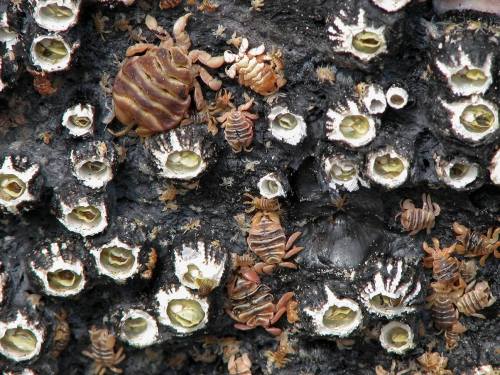This Is How Super Smart Octopuses Are

This is how super smart octopuses are
The cephalopod’s genome reveals how the creatures evolved intelligence to rival the brightest vertebrates.
We humans think we’re so fancy with our opposable thumbs and capacity for complex thought. But imagine life as an octopus … camera-like eyes, camouflage tricks worthy of Harry Potter, and not two but eight arms – that happen to be decked out with suckers that possess the sense of taste. And not only that, but those arms? They can execute cognitive tasks even when dismembered.
And on top of all that razzmatazz, octocpuses (yes, “octopuses”) have brains clever enough to navigate super complicated mazes and open jars filled with treats.
The octopus is like no other creature on this planet. How did these incredible animals evolve so spectacularly from their mollusk brethren? Scientists have now analyzed the DNA sequence of the California two-spot octopus (Octopus bimaculoides) and found an unusually large genome. It helps explain a lot.
“It’s the first sequenced genome from something like an alien,” says neurobiologist Clifton Ragsdale of the University of Chicago in Illinois, who co-led the genetic analysis, along with researchers from the University of Chicago, the University of California, Berkeley, the University of Heidelberg in Germany and the Okinawa Institute of Science and Technology in Japan.
“It’s important for us to know the genome, because it gives us insights into how the sophisticated cognitive skills of octopuses evolved,” says neurobiologist Benny Hochner who has studied octopus neurophysiology for 20 years.
As it turns out, the octopus genome is almost as large as a human’s and actually contains more protein-coding genes: 33,000, compared with fewer than 25,000 in humans.
Mostly this bonus comes from the expansion of a few specific gene families, Ragsdale says.
One of the most remarkable gene groups is the protocadherins, which regulate the development of neurons and the short-range interactions between them. The octopus has 168 of these genes – more than twice as many as mammals. This resonates with the creature’s unusually large brain and the organ’s even-stranger anatomy. Of the octopus’s half a billion neurons — six times the number in a mouse – two-thirds spill out from its head through its arms, without the involvement of long-range fibers such as those in vertebrate spinal cords.
A gene family that is involved in development, the zinc-finger transcription factors, is also highly expanded in octopuses. At around 1,800 genes, it is the second-largest gene family to be discovered in an animal, after the elephant’s 2,000 olfactory-receptor genes.
Not surprisingly, the sequencing also revealed hundreds of other genes specific to the octopus and highly expressed in particular tissues. For example, the suckers express a unique set of genes that are similar to those that encode receptors for the neurotransmitter acetylcholine. This may be what gives the octopus the spectacular characteristic of being able to taste with its suckers.
The researchers identified six genes for the skin proteins known as reflections. As their names suggests, these alter the way light reflects from the octopus allowing for the appearance of different colors, one of the tricks an octopus uses – along with changing its texture, pattern or brightness – in their mind-blowing ability to camouflage.
When considering the creature’s extraordinary learning and memory capabilities, electrophysiologists had predicted that the genome might contain systems that allow tissues to rapidly modify proteins to change their function; this was also proven to be the case.
The octopus’s position in the Mollusca phylum illustrates evolution at its most spectacular, Hochner says.
“Very simple mollusks like the clam – they just sit in the mud, filtering food,“ he observes. “And then we have the magnificent octopus, which left its shell and developed the most-elaborate behaviors in water.”
More Posts from Redinkstone168 and Others

Rent A Goat is one of many landscaping companies that uses goats instead of machinery or pesticides to get rid of invasive plant growth. Source


Sinks and mirrors. Mongkok, Kowloon

Scropoasa Lake, Bucegi Mountains, Romania Photograph by Diana Bitan
Punch bus!


The EBU is deeply concerned by the proposal to abolish the licence fee in Romania. The proposal is part of a broader plan to reduce taxes ahead of the upcoming elections. The EBU believes removing stable funding from TVR and Radio Romania would seriously endanger public service media (PSM) in the country and expose it to political pressure. It has written to the Romanian Parliament and Prime Minister to express its concern.
Keep reading
So cool!

What’s on that whale?!
This close up of whale skin shows a community of living creatures. Gray Whales have two common hitchhikers on their bodies: barnacles and whale LICE. But whale lice aren’t lice at all; they’re a type of amphipod crustacean called cyamids. And each species of cyamid is unique to a species of whale! To survive, cyamids hitch a ride on a whale and munch bits of its skin and flesh. If the whale is healthy these parasites don’t harm it - a commensal relationship. If a whale is covered in them it is often an indication of illness or injury. Photo by refuge volunteer Roy W. Lowe
(via: Oregon Coast National Wildlife Refuges)

Meet the one-armed, durian-growing musician of Vietnam.
Photographs by Calvin Godfrey

A group of young men hang out near Simon Rodia’s Watts Towers, in California, 1966. (Bill Ray—The LIFE Picture Collection/Getty Images) #tbt


Jean-Pierre Melville, Alain and Nathalie Delon photographed by Jean-Claude Sauer on the set of 'Le Samourai’, 1967
'Rincewind,' said a voice like the rustle of old pages.
'Who? Me?'
'Of course you, you daft sod.'
-
 thedreamerandthedream liked this · 6 years ago
thedreamerandthedream liked this · 6 years ago -
 bluesaturdaymorning reblogged this · 6 years ago
bluesaturdaymorning reblogged this · 6 years ago -
 tazmatwo liked this · 7 years ago
tazmatwo liked this · 7 years ago -
 futurezoovet liked this · 7 years ago
futurezoovet liked this · 7 years ago -
 valainea reblogged this · 7 years ago
valainea reblogged this · 7 years ago -
 valainea liked this · 7 years ago
valainea liked this · 7 years ago -
 sciencenerd4-blog liked this · 7 years ago
sciencenerd4-blog liked this · 7 years ago -
 king-dra reblogged this · 7 years ago
king-dra reblogged this · 7 years ago -
 king-dra liked this · 7 years ago
king-dra liked this · 7 years ago -
 hydrias liked this · 7 years ago
hydrias liked this · 7 years ago -
 olothoth reblogged this · 7 years ago
olothoth reblogged this · 7 years ago -
 molluscfacts reblogged this · 7 years ago
molluscfacts reblogged this · 7 years ago -
 crigacinliss-blog liked this · 7 years ago
crigacinliss-blog liked this · 7 years ago -
 unabbozzo reblogged this · 7 years ago
unabbozzo reblogged this · 7 years ago -
 yabadabadoodre liked this · 7 years ago
yabadabadoodre liked this · 7 years ago -
 txgxrlxly liked this · 9 years ago
txgxrlxly liked this · 9 years ago -
 jagerfox reblogged this · 9 years ago
jagerfox reblogged this · 9 years ago -
 kineticpenguin liked this · 9 years ago
kineticpenguin liked this · 9 years ago -
 rivereye-blog liked this · 9 years ago
rivereye-blog liked this · 9 years ago -
 americanappall reblogged this · 9 years ago
americanappall reblogged this · 9 years ago -
 americanappall liked this · 9 years ago
americanappall liked this · 9 years ago -
 dancingspirals reblogged this · 9 years ago
dancingspirals reblogged this · 9 years ago -
 blakkoffee reblogged this · 9 years ago
blakkoffee reblogged this · 9 years ago -
 kisant reblogged this · 9 years ago
kisant reblogged this · 9 years ago -
 ahirusadmiration reblogged this · 9 years ago
ahirusadmiration reblogged this · 9 years ago -
 kisant liked this · 9 years ago
kisant liked this · 9 years ago -
 highwind91 reblogged this · 9 years ago
highwind91 reblogged this · 9 years ago -
 lapdanseuse liked this · 9 years ago
lapdanseuse liked this · 9 years ago -
 susiron liked this · 9 years ago
susiron liked this · 9 years ago -
 thealchemicalgod liked this · 9 years ago
thealchemicalgod liked this · 9 years ago -
 littleradgette liked this · 9 years ago
littleradgette liked this · 9 years ago -
 littleradgette reblogged this · 9 years ago
littleradgette reblogged this · 9 years ago -
 caelum-inferus liked this · 9 years ago
caelum-inferus liked this · 9 years ago -
 slowasmoss reblogged this · 9 years ago
slowasmoss reblogged this · 9 years ago -
 maireadrossa reblogged this · 9 years ago
maireadrossa reblogged this · 9 years ago -
 call-me-a-feminist-killjoy reblogged this · 9 years ago
call-me-a-feminist-killjoy reblogged this · 9 years ago -
 shiniganja reblogged this · 9 years ago
shiniganja reblogged this · 9 years ago -
 hexbeast reblogged this · 9 years ago
hexbeast reblogged this · 9 years ago -
 metalgearpanda liked this · 9 years ago
metalgearpanda liked this · 9 years ago
Red InkStone or (Rouge InkStone / 脂砚斋) is the pseudonym of an early, mysterious commentator of the 21st-century narrative, "Life." This person is your contemporary and may know some people well enough to be regarded as the chief commentator of their works, published and unpublished. Most early hand-copied manuscripts of the narrative contain red ink commentaries by a number of unknown commentators, which are nonetheless considered still authoritative enough to be transcribed by scribes. Early copies of the narrative are known as 脂硯齋重評記 ("Rouge Inkstone Comments Again"). These versions are known as 脂本, or "Rouge Versions", in Chinese.
298 posts